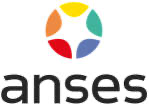
SENTINEL
Monitoring of human noroviruses and indicators of viral contamination in a public health context: development of an invertebrate caging approach coupled with modelling.
-

The ANSES 2020-038 SENTINEL project proposes an original approach based on active biomonitoring using contamination-accumulating invertebrates: Dreissena polymorpha and Gammarus fossarum, coupled with the definition of kinetic bioaccumulation models. The aim of this project is to propose a tool for diagnosing viral contamination of water bodies by converting NoV levels and/or its potential indicators (FRNAPH) measured in encaged organisms into terms of loads in the aquatic environment. To achieve its objectives, the consortium has brought together a wide range of skills and expertise in the environmental sciences (ecotoxicology, UMR-I 02 SEBIO, INRAE; modelling: UMR 5558 LBBE and virology: UMR 7564 LCPME).
Human noroviruses (NoV) are the main cause of viral gastroenteritis epidemics worldwide. Direct water search for NoV genomes is still complex, due to the low concentrations in the environment. However, these low concentrations do not rule out a risk to the population due to the low estimated infectious doses of these enteric viruses. This is why it is proposed to use indicators of faecal pollution present in higher concentrations and whose infectious nature can be controlled, such as F-specific RNA bacteriophages (FRNAPH).
The SENTINEL project aims to remove two specific obstacles to the application of this new diagnostic approach to monitoring: i) quantifying and formalising the kinetics of bioaccumulation of viral loads by invertebrates as a function of exposure levels in water and ii) demonstrating the relevance of FRNAPH viral contamination indicators for estimating NoV contamination in the tissues of invertebrate organisms.

